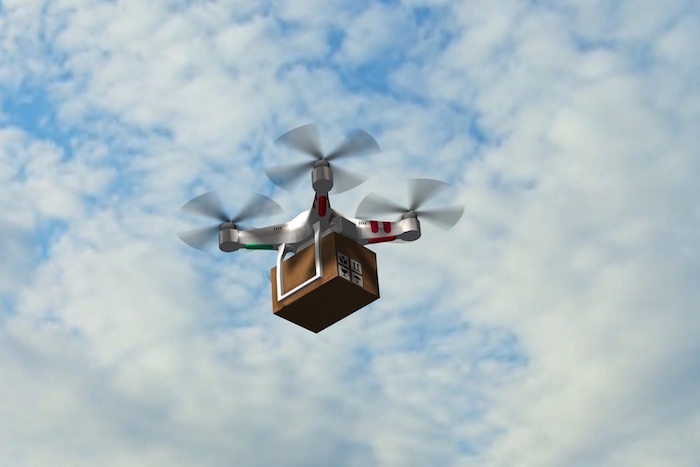
Like the high school quarterback or the trust fund baby, Amazon very rarely finds itself behind the eight ball. Whether it’s making express delivery options a standard industry offering or turning the initial jeers at the Echo into near-universal praise, it’s safe to say that, when the eCommerce giant commits itself to a plan, it very rarely experiences the hard landings that would ground lesser merchants.
Never say never, though — if only because it looks like Amazon’s vaunted drone program is being overtaken by other, nimbler competitors.
It was only November when Amazon and guest emcee Jeremy Clarkson announced to the world the imminent possibility of airborne Prime packages. Drones and their commercial prospects had, of course, been floated around in think tanks and R&D brainstorming sessions before then, but Amazon’s slickly produced video announced a new reality to shoppers and competitors alike: Drones are coming, and Amazon is going to get them off the ground.
Fast forward to the start of summer 2016, and Amazon no longer looks to be in the lead in that regard. On Thursday (June 2), Walmart announced that it was between six and nine months from integrating drones into its warehouse operations. Shekar Natarajan, vice president of last mile and emerging sciences at Walmart, told Reuters that the plan is for these remotely controlled devices to zoom through the innumerable aisles of fullfillment centers, scanning product stock and snapping images at 30 frames per second — all to alert a human operator when inventory approaches the point of replenishing.
It’s not just Walmart. While still in closed testing, DHL has managed to automate the entire drone delivery process, from package loading at combination landing pad/warehousing stations to final dropoffs. These drones managed to shorten a half-hour trip for a van through the Bavarian mountains to an eight-minute flyby, and Jürgen Gerdes, a member of DHL’s management board, is pushing for tests in cities as well.
“With this combination of fully automated loading and unloading, as well as an increased transport load and range of our Parcelcopter, we have achieved a level of technical and procedural maturity to eventually allow for field trials in urban areas as well,” Gerdes said in a statement.
While Walmart, DHL and countless smaller startups have managed to wrest control of the headlines away from Amazon, the last anyone has heard from Seattle came in January, when Paul Misener, vice president for global public policy at Amazon, filled Yahoo in on the vague progress the company has made with its prototypes and control schemes. However, rather than dazzle readers with a slickly produced video like Amazon did back in November, Misener acknowledged that the sheer geographical scope of the company’s retail markets — i.e., almost everywhere — makes the challenge of developing the appropriate devices and safeguards a much more involved process.
“Some live in rural farmhouses; some live in high-rise city skyscrapers and then everything in between, in suburban and exurban environments,” Misener said. “We want to be able to serve all of those customers. And it may take a different kind of a drone to best work in each one.”
Amazon may have billed itself as the flag-bearer of an airborne delivery paradigm, but it’s increasingly looking like there’s still more work to do to establish a program that’s both flexible and safe enough to service the millions of consumers that it’s hooked on its services.
That’s where the slow-and-steady, “better-safe-than-sorry” approach could work out in the end for Amazon. Customers already have a very particular idea of the level of service and convenience Amazon can achieve and does consistently make good on, and if its first drones prove to be nothing more than a beta release, dropping packages from 50 feet above the ground or navigating themselves into the high branches of a tree, Amazon’s sky-high reputation has a lot further to fall.